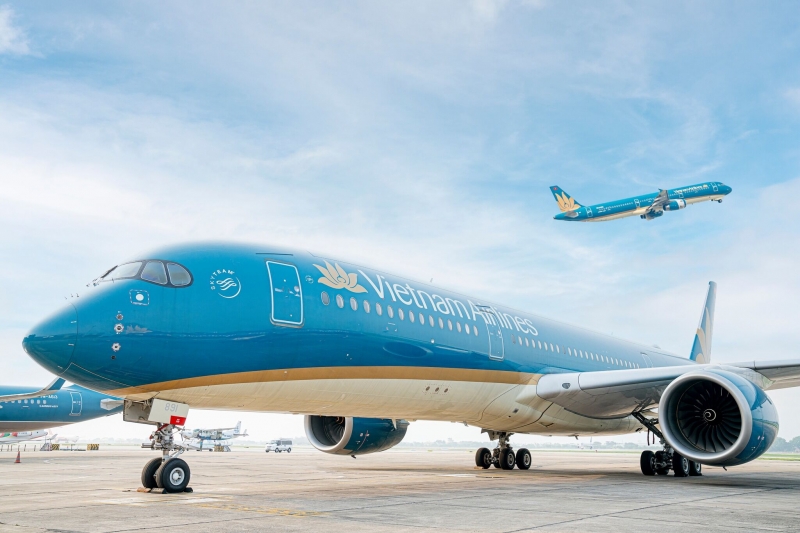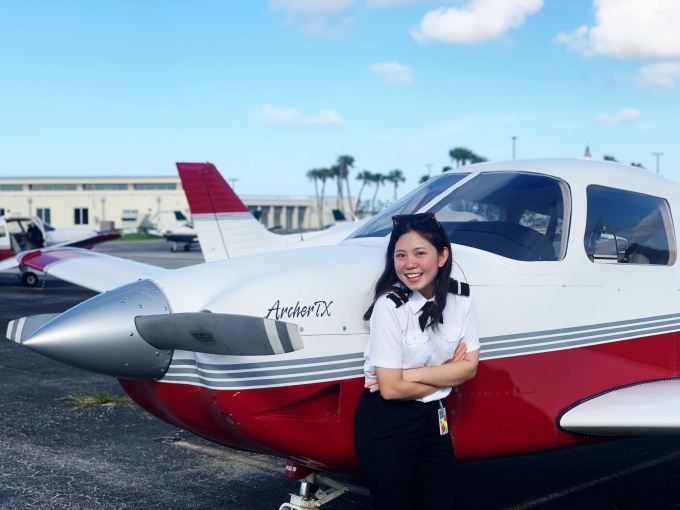Deviating from the FARs(Federal Aviation Regulation) or clearances can get you in trouble. While some infractions could result in a slap on the wrist, you can lose your license for others.
Most pilot deviations are inadvertent, but sometimes there is no choice and pilots are forced to deviate from clearances and ignore regulations.
Piercing control zones, disregarding minimum separation distances or altitudes, or neglecting weather minimums are some examples of PD, or Pilot Deviations. The only valid defense you may have is if you can prove that by deviating you avoided death and destruction.
From chalk to chalk, the safety of your passengers, crew, aircraft, and even the world outside is your responsibility. To help execute that responsibility, the FARs spell out what can and can't be done. Any deviation from that, and the FAA springs into action.
As a seasoned pilot with hundreds of flight hours under my belt, I've had my share of close calls. When it comes to avoiding pilot deviations, I find extensive pre-planning and thorough knowledge of the FAR and the AIM to be my best tools.
What is a Pilot Deviation?
Pilot deviation is serious business and could be the career killer that you never planned on. It is a technical term that means that the pilot in command failed to observe FAA regulations, ATC clearances, or temporary flight restrictions in the conduct of his/her flight.
If you are on an IFR flight and told to maintain a certain altitude, deviating from that altitude beyond tolerances set by the regs qualifies as pilot deviation. So are aberrations in direction, airspeed, IFR procedures. It is interesting to note that IFR flights rack up the most number of pilot deviations in any given year. And this makes a lot of sense because IFR flying has more rules pilots need to be familiar with, and are done under some of the more strenuous conditions.
That is not to say that VFR pilots are free from errors. Penetrating controlled and restricted airspace are the top reasons for pilot deviations under VFR conditions, along with altitude selection, airspeed violations, and not maintaining the declared course heading.
As for student pilots, they are not immune from pilot deviations. And one of the most frequent errors they make are failing to hold short of an active runway.
Five Causes of Pilot Deviation and How to Avoid Them
There are five main situations that lead to eventual pilot deviation.
1. Ignorance of FARs
Remember, ignorance is not a defense.
If you don't remember all your regs or don't particularly understand them, you are very likely going to make a mistake that gets your ticket revoked. The FARs, while seeming complex and legalistic, is a well thought-out and well organized guide to operating in the shared flight environment.
It is based on common sense and backed by mountains of data that the FAA collated in an effort to keep the flying community safe.
My flight instructor told me a long time ago that the FAR/AIM book is every pilot's bible. That remains true today as it did back then. Read it repeatedly, commit its relevant contents to memory, and you will slowly develop a sense for what it all means. In the meantime use memory aids to remember each limb of the rules.
By the time you start flying heavy metal, the rules you memorize as a student pilot begin to have practical meaning.
2. Disorganized Cockpit
The key to a safe and smooth flight is an organized cockpit. From pre-departure briefings, to working closely with your co-pilot, and staying ahead of the aircraft at all times, you can keep yourself out of trouble.
A disorganized cockpit leads to diminished flight quality and poor emergency management in the worst case scenario. It can even escalate any unexpected issues and turn it into an emergency.
VFR flights are no different from IFR in this regard.
You can overcome this by making sure all the necessary sectionals, en route charts, and terminal charts are arranged neatly and tucked away on your knee-board or making sure you have all the approach plates positioned in a way that you can access them easily will allow you to handle unexpected issues without degraded control of the plane or losing your situational awareness.
In essence you need to practice good Cockpit Resource Management. CRM, as it is called, is about how you manage your flight deck. While CRM extends beyond just avoiding pilot deviations, it goes a long way in teaching you how to handle single pilot operations.
There is a lot going on during critical phases of flight. Pilots have to monitor aircraft systems, weather, navigate, and listen out for ATC, just to name a few. The more adept one is at doing all these simultaneously, the lower the chances of getting overwhelmed and making a mistake.
Create a workflow in the cockpit that becomes a habit. Keep your charts in its place. Keep your devices in theirs. Make sure that that workflow comports with your style of flying. In an emergency, a practiced workflow will allow you to keep your eye on flying the aircraft and avoid breaking any rules.
3. Poor Equipment Familiarity
Getting a new gadget installed in your plane is always a cause for excitement. But if you are not fully familiar with it, fiddling en route is never a good idea. It's easy to get engrossed with it and lose your awareness of your aircraft.
The more you fiddle the further behind you will fall behind the aircraft, and as I am sure your flight instructor has told you many times, always stay ahead of your aircraft.
On the other side of that is the reliance on a new piece of equipment that you have poor facility with. If, for instance, you rely on a newly installed GPS that ties in with your auto pilot, and you program it incorrectly, you could find yourself in a heap of trouble very quickly.
The fix for this is simple. Get to know each and every piece of equipment in the aircraft before you take it out on a flight.
4. Inadequate Planning
Every flight you make, no matter how many times you have made it, needs to be planned like it's your very first time. The moment familiarity creeps in and makes your flight feel like a quick run to the store, you are on your way to making a blunder.
I get a briefing from an FSS controller even if I am just going up to do some pattern work, or shuttling a plane to an airport five minutes away on a maintenance run. It's not all about the weather.
First off, I like creating and maintaining a habit of calling my local FSS. They are a wealth of knowledge and make it a point to give pilots good advice on the most current weather, including PIREPS.
Secondly, there is the need to know about NOTAMs and advisories. Can you imagine taking a short flight, ten minutes from your home base, only to find that it has a TFR (Temporary Flight Restrictions), due to the arrival of Air Force One?
Finally, I want my briefing on the record. It helps just in case there is an investigation.
Once you have planned the flight, call the briefer one more time and update yourself along the path you have chosen.
5. Unfamiliar With the Aircraft's Performance
Being unfamiliar with your aircraft's abilities is a catastrophe waiting to happen. Being unfamiliar doesn't just mean you haven't been checked out in an aircraft. It means that you are not fully comfortable with all its operational parameters, quirks, its systems and its flight characteristics.
Being unfamiliar with one's equipment could possibly lead you towards momentary loss of situational awareness as you contemplate a problem or when the plan is not performing as you expected it to.
That momentary loss of situational awareness could cause you to bust altitudes or airspeed the terminal environment that results in the bone-chilling, “Please call this number when you land,” transmission on the radio.
It is always a good idea to practice maneuvers and emergencies with a CFI on board. This does two things for you. It increases your proficiency with the aircraft and it allows you to commit emergency responses to reflex. You would still need to use the checklist, but at least the shock factor will be much less and that will allow you to still fly the plane.
Additional Tips to Avoid Pilot Deviation
The main skill you will have to get comfortable with when being a pilot is being aware of your equipment and your environment. It's not difficult, it just takes a little concerted effort.
Plan Your Flight
Flight planning doesn't stop at getting a FSS briefing. Once you do, look at the sectional (even if you are flying IFR) and the en route chart. Get to know the terrain and the features of the area. Know the airports along your route of flight.
Understand the obstacles and minimum safe altitude. Study the area and the different airspace along your route of flight.
If you are flying VFR, give yourself a wide berth when passing restricted airspace or terminal areas.
If you are flying IFR, go ahead and use the VFR sectional to help orient you with the area. Make yourself familiar with the terrain and the minimum safe altitudes along your route of flight.
Avoid Automation Bias
Don’t rely on automation blindly. Whether the autopilot is engaged and the GPS is hooked up, always sit back and monitor the information. Flight automation is not about turning yourself into a passenger. It is meant to assist you in reducing your workload so that you can now monitor the aircraft and its progress along the flight path.
Increase Tolerances
Whether it is extra fuel, or clearance distances with terminal airspace, always give yourself wider room. For instance, don't just clip the edge of a Class B cone. Go wide, give yourself a mile. Or, when it comes to calculating fuel reserves, give yourself a little more.
Update Briefings
Before you reach your top of descent, when the cockpit is still fairly quiet, get one last briefing from the flight service station. Make sure to do this on a second radio. Do not switch away from your ATC frequency.
Ask the briefer for updates to your route of flight as well as NOTAMS and PIREPS for your destination airport. Do this especially if you are flying into an uncontrolled field.
Remain Alert
Your awareness comes from being alert during all phases of the flight. This includes ground operations and taxiing. If you are in an unfamiliar airport, ask for a Progressive Taxi. And make sure you read back every instruction that is given to you. Be absolutely clear with taxi instructions.
Whenever you are unsure, stop before crossing another taxiway. Definitely stop before crossing another runway, active or not, if you do not have clearance to cross.
Sterile Cockpit
This ties in with the previous point of being alert. Always maintain a sterile cockpit. This is where passengers are not allowed to distract you while you are flying. Most seasoned pilots have strict sterile environments when the fly with their family and include the taxi, departure, and arrival phases of their flight.
Anticipate Reciprocate Activate
Finally, make sure you practice clear communication habits with the controllers. This includes everything from the point you get your clearance to the point you close your flight plan.
It is always good to anticipate what the controller is going to tell you. When I fly into New York during rush hour and the wind is blowing in a certain direction, I know how the controller is going to vector me to the marker.
Always reply only to the crucial information. Controllers are adept at hearing truncated messages. The longer you keep your push-to-talk switch depressed, the longer someone else is not getting his or her clearance.
Finally, once you have received and read back your instructions or clearances, you have to translate them into action. Nothing less, nothing more.
AUTHOR
Joe Haygood
 English
English
 Korea
Korea







